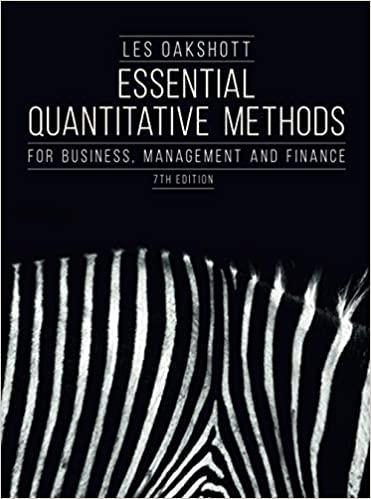Question
AstraZeneca: Fighting a global pandemic (2021) Under intense pressure during the global pandemic, AstraZeneca met the global need for Covid-19 vaccines by leveraging PMI standards.
AstraZeneca: Fighting a global pandemic (2021) Under intense pressure during the global pandemic, AstraZeneca met the global need for Covid-19 vaccines by leveraging PMI standards. AstraZeneca partnered with the University of Oxford to address the vaccine problem; this work included managing clinical trials while simultaneously ramping up manufacturing capacity. As customers were mainly governments seeking to immunize their populations, each government brought its own regulatory requirements and compliance framework challenges. The AstraZeneca team put in place the project management infrastructure necessary to address some of the complex challenges including finding experienced vaccine development internal project managers; implementing project management processes to develop the vaccine at great speed; and establishing an internal government contracting organization that could support the project. The first step was to create a project management office (PMO). Prior to COVID, the AstraZeneca R&D unit did not have a PMO because the types of projects it managed didn't require the capabilities of a dedicated office. The vaccine project was a different story. PMI's A Guide to the Project Management Body of Knowledge (PMBOK Guide) the creation of the PMO provided the framework for. "We literally pulled out the PMBOK and said, 'What kind of PMO are we going to deploy next week? What are the control elements that a typical PMO would have, and which ones do we most need on this one?'" Dixon said. "We couldn't build a PMO that would take two years because we had to do it in a week The ability to rely on the PMBOK Guide framework relieved the project management team of having to design the PMO from scratch. It also served as a source of credibility that Dixon could lean on in conversations with senior leaders: "'We have a control framework, and it's based on the PMBOK, and this is how other companies do it. It's the right way to do it.'" Staffing the Project The next challenge was to staff the PMO. Hiring externally would have taken time that the project didn't have, so Dixon started her search internally, looking for people within her existing team of 80 project managers, as well as people outside the team with relevant experience in their careers. Drawing on her knowledge of their backgrounds and on feedback from others across the company, Dixon staffed the vaccine team with people who had worked on government contracts or vaccine projects in the past. One person, for example, had worked for a company that helped other drug manufacturers secure government contracts, and another had worked on government contracts for a company AstraZeneca had acquired. Focusing the Project Manager's Role Dixon hired Tina Guina, who previously had worked at the US government's Biomedical Advanced Research and Development Authority (BARDA), to serve as the lead R&D global project manager for the vaccine project. The project manager, however, would have to play a different role than in a typical AstraZeneca R&D project. On those projects, the project manager would often serve as a relationship manager with the external partner or customer, negotiating the contract with support from the project staff while also managing the project. But the vaccine project was too big, complex, and risky for the project manager to have such a broad role. The US government contract alone was so big that the responsibilities had to be divided. The newly created PMO proved invaluable for easing the project manager's responsibilities in contract management, schedule and budget integration, compliance, and risk management, enabling her to focus primarily on the efforts of the project team. Scaling to Meet Government Requirements Working with government contracts of this size and scope called for project management deliverables that were not standard practice for AstraZeneca R&D projects. A typical drug project schedule might track a few hundred top line tasks, with responsibility delegated to sub teams to manage at greater levels of detail. Contracts of this size and scope required a master schedule, which in turn demanded bringing in a person with this experience to kick-start the process. The budgeting process was similarly unfamiliar: most R&D project budgets were developed at a high level from the top down. Government contracts often require a bottom up approach with significantly more detail. Adaptability was the core project management challenge every step, the project faced changing circumstances as governments across the globe lined up. At to become customers. For example, the US government initially planned to issue the contract through BARDA, but given the sheer size of the agreement, elected to move the contract to the Department of Defence (DOD), which had significantly more experience with procurements of this size. As of July 2021, AstraZeneca has released 1 billion doses for supply to 170 countries.
Question 2
QUESTION TWO [24] 2.1. Describe the steps in developing the project scope statement (6) 2.2. Critically discuss how to define scope in agile projects (8) 2.3. A Work Breakdown Structure (WBS) can be used as a pictorial representation of project deliverables which helps project team members to remember they remember all deliverables that need to be created. Describe the process to construct a WBS (6) 2.4. Briefly discuss the two approaches to decompose the project deliverables contained in the WBS .
Step by Step Solution
There are 3 Steps involved in it
Step: 1

Get Instant Access to Expert-Tailored Solutions
See step-by-step solutions with expert insights and AI powered tools for academic success
Step: 2

Step: 3

Ace Your Homework with AI
Get the answers you need in no time with our AI-driven, step-by-step assistance
Get Started


